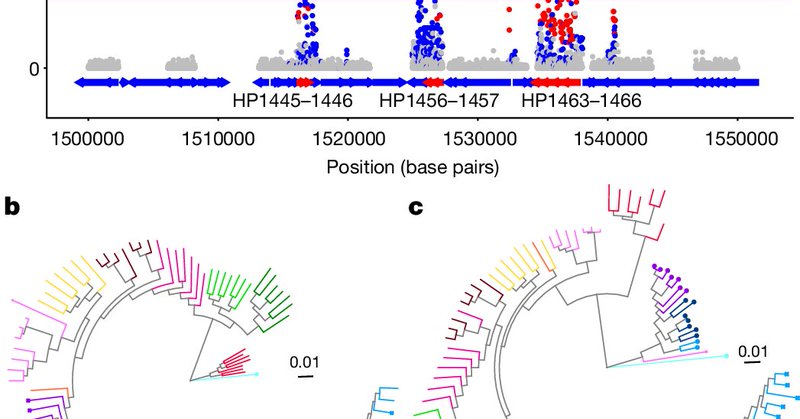
daniel falush
@DanielFalush
Followers
4K
Following
678
Media
184
Statuses
3K
Statistical genetics of bacteria, humans etc. Hiring at all levels - do get in touch.
Institute Pasteur Shanghai
Joined September 2014
Our paper "An Ancient ecospecies of Helicobacter pylori" was published yesterday in Nature. Thanks to Elise, Roberto, Sarah and our collaborators in Oita, Gothenburg and elsewhere for their hard work.
nature.com
Nature - ‘Hardy’ Helicobacter pylori ecospecies shares the ancestry of ‘Ubiquitous’ H. pylori from the same region in most of the genome but has nearly fixed...
2
11
28
RT @leo_speidel: Postdoc position in my group in Tokyo! .Please get in touch if you are interested. And happy to discuss projects - rang….
riken.jp
0
38
0
Delighted to present our Macrogenetics atlas of prokaryotes. This is a herculean effort from Chao Yang, which has a previous existence as a preprint first posted in 2018 "why panmictic bacteria are rare?"
biorxiv.org
Background Bacteria typically have more structured populations than higher eukaryotes, but this difference is surprising given high recombination rates, enormous population sizes and effective...
1
3
4

















